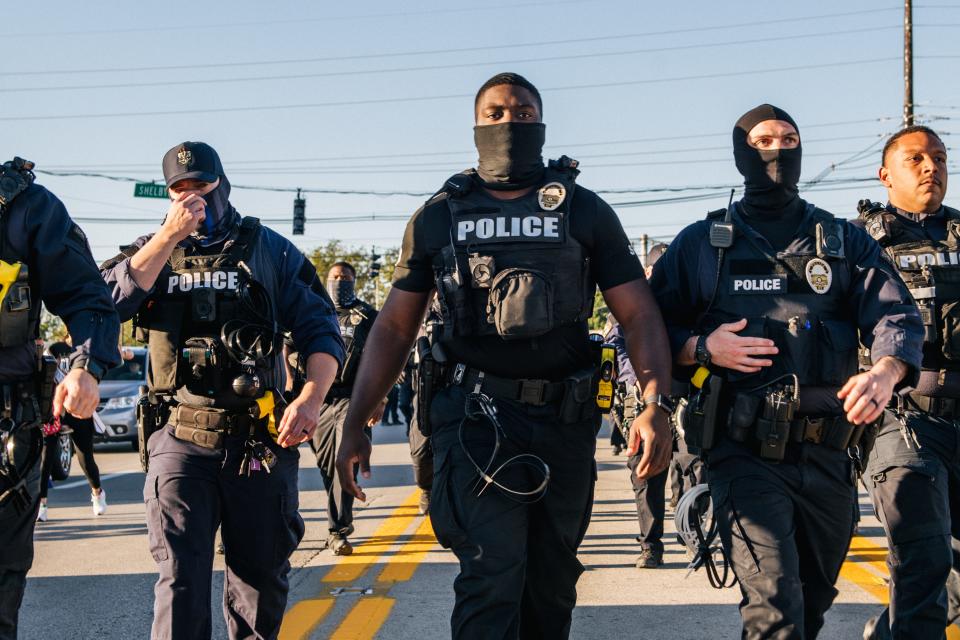The police should not create crime
In September 2012, an undercover police officer who went by the name “Dan” posed as a student at Temecula Valley High School in Riverside County, going to classes and befriending “peers” for several months. During a graphic design class, “Dan” eventually befriended Jesse Snodgrass, a new 17-year-old student with autism.
Jesse’s autism limited his ability to read social cues, and as a newcomer to the school, he was eager to please his new friend. So when “Dan” began asking, in documented text messages, how he could get his hands on some drugs, Jesse offered to help. After “Dan” gave Jesse a $20 bill to buy marijuana, Jesse approached a man who appeared to be homeless and who accepted the $20 for a plastic bag of half a joint-worth of marijuana. Jesse then gave the bag to “Dan.” Jesse did a similar transaction for Dan a month later. And then on December 11 of that year, armed officers stormed the high school and arrested 22 students in a sting — students including Jesse and six others with special needs — who had turned drugs over to “Dan.” Jesse was charged with “felony for possession for sale of a controlled substance.”
Are undercover stings a good use of taxpayer supported police funds?
This was how the Riverside Police Department decided to use taxpayer public safety funds: ensnaring children with special needs, many of whom had never used or sold drugs before. In Jesse’s case, the backlash was swift. After making national headlines, outcry effectively forced local law enforcement in Riverside to halt undercover stings in schools.
Although the details of this operation may be particularly offensive, it is important to recognize that this is exactly how undercover stings are designed to work: undercover police officers solicit and encourage people to engage in criminal activity, leading to their arrest and incarceration. ATF repeatedly uses a sting in which an undercover officers lures individuals to agree to commit a robbery of an imaginary place where drugs are stored. Individuals — often those down on their luck and in need of money — are targeted and arrested for conspiracy to commit a robbery — despite any evidence that these targeted individuals have ever committed crimes like this before. In another troubling example, a few years after Hurricane Katrina, the New Orleans Police Department placed an unlocked vehicle stocked with food, cigarettes, and alcohol — with its windows rolled down — across the street from a homeless encampment. Those who entered the car were arrested and charged with felony burglary of a vehicle, a crime that carried up to 12 years in prison.

There are too many such cases, where police create elaborate schemes using significant public resources to tempt individuals who posed no public safety threat prior to the operation. And these examples reveal another tactic in the undercover sting playbook: targeting the most vulnerable and “temptable” people, like students with special needs, individuals experiencing homelessness, and those who are in desperate need of money.
Police brutality: Yes, Rochester police, the death of mentally ill Daniel Prude is 'your guys’ fault'
The law states that police may not entrap individuals by inducing crime, but the line between presenting someone the opportunity to commit a crime and inducing them to commit a crime is murky. Would Jesse have ever sold drugs had his new friend not suggested he do so? Would homeless individuals in New Orleans have broken into a car had the police not placed it there with food? In these cases, are the police solving crimes, or are they creating crime where none existed before?
These stings exploit the vulnerable
One can argue that the individuals arrested in these stings did in fact commit a crime. But these stings raise more fundamental questions about who we consider a criminal and how we punish. How blameworthy are these individuals? Should they be sentenced to long prison sentences? Should the fact that the police encouraged their actions be accounted for in their sentencing? Unfortunately, due to mandatory sentencing and the wide deference given to law enforcement in our criminal law, judges hands are often tied, and those caught are sentenced to long and severe prison sentences.
Furthermore, these stings, which use limited law enforcement resources to exploit vulnerable people and upend their lives and families, provoke broader questions about the very existence of undercover policing and whether the current tactics are a fair and effective use of scarce public safety resources. Amid a national reckoning over police violence and with federal and local governments facing devastating budget shortfalls due to the COVID-19 pandemic, we must re-examine whether it’s a sensible use of resources for police to be creating crime just so they can claim they stopped it.
Reforming law enforcement and justice: Why support for criminal justice reform isn't the same as being anti-police
Reimagining public safety means demanding our police departments stop using undercover policing stings that are not narrowly focused on catching previously known offenders. We must advocate for stricter rules on police stings that limit where they can be used and against whom they should be used. With communities in desperate need of increased spending on mental health and social services, we should not be wasting taxpayer dollars on stings that result in the lengthy imprisonment of individuals who were encouraged to commit crimes they may never have committed in the first place.
Katie Tinto is a clinical professor of Law, UC Irvine School of Law.
You can read diverse opinions from our Board of Contributors and other writers on the Opinion front page, on Twitter @usatodayopinion and in our daily Opinion newsletter. To respond to a column, submit a comment to letters@usatoday.com.
This article originally appeared on USA TODAY: Police and undercover sting operations: stop creating crime


